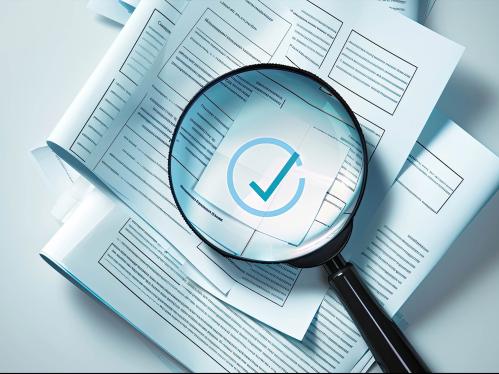Digital Accessibility
Making Learning Accessible for All: Meeting ADA Title II Standards
At Rutgers, we are committed to fostering an inclusive academic environment where everyone can access digital and educational resources. Accessibility is more than a legal requirement, it’s a reflection of our core values.
In April 2024, the U.S. Department of Justice updated Title II of the Americans with Disabilities Act, clarifying that digital materials must be accessible. Public universities like Rutgers must ensure all websites, learning platforms, documents, and digital content meet Web Content Accessibility Guidelines (WCAG) 2.1 AA by April 24, 2026, with limited exceptions.
University Policy
Rutgers University has established a revised Digital Accessibility Policy, effective in June 2025. This policy outlines the university's commitment to digital accessibility and provides guidelines for all units, departments, and schools. Units, departments, and schools should review the policy and determine the best approach to develop a digital accessibility plan that meets these requirements.
Critical Elements of Digital Accessibility
Rutgers has identified three critical areas where accessibility must be addressed: website accessibility, course content accessibility, and accessible procurement of digital technologies. Each area plays a vital role in supporting the university's mission of academic excellence and equal opportunity. The following sections provide guidance and resources for units and departments to begin strategic planning and implementation in each of these core domains.
Course Accessibility
To initiate strategic planning for a school's course content accessibility, unit leadership should work in partnership with Rutgers Access and Disability Resources (RADR) to develop a plan that addresses accessibility needs. RADR can provide guidance, resources, and support throughout this process.
To begin, unit leaders or their designees can complete the Course Accessibility Benchmark Form to the best of their ability. Faculty and instructors interested in learning more or contributing to the process may visit University Online Education Services (UOES) to explore accessibility resources.

Website Accessibility
To initiate strategic planning for your unit’s web content accessibility, unit leadership should collaborate with the Office of Information Technology Accessibility (OITA) to develop a comprehensive plan that addresses all digital content and platforms. OITA can assist with evaluating your website, email and marketing tools, social media accounts, product purchases, and more.
To get started, please complete the Website and Department Support Form and select “department support.” This will begin a conversation tailored to your unit’s needs. OITA can also help identify relevant training opportunities or coordinate local sessions as needed.

Purchasing or Procuring Digital Technologies
Unit leadership should consider accessibility as a core part of the IT purchasing process. All electronic and information technology (EIT) systems, applications, software, and services used by Rutgers University are required to be assessed for accessibility.
To support this process, the Accessibility Risk Assessment Survey can help evaluate potential accessibility barriers prior to purchase. In addition, the Accessibility Resources for IT Purchases page offers practical tools such as templates, tutorials, best practices, and a glossary to guide your review. These resources are available to both units and individuals involved in procurement to ensure accessibility compliance and informed decision-making.

Why Digital Accessibility Matters: Facts You Should Know
Digital accessibility isn’t just a technical requirement—it’s a fundamental part of inclusion. Millions of people face barriers every day when websites, course materials, and technologies aren't designed with accessibility in mind.
U.S. Adults Live With a Disability
That’s over 61 million people who may face barriers if digital content isn't accessible.
Percentage of Web Content That Is Accessible
Despite growing legal and ethical pressure, over 96% of the world's one million web pages are not accessible to users with disabilities.
Amount Captions Improve Comprehension
Accessibility features like captions don’t just help people who are deaf or hard of hearing—they benefit everyone, including non-native speakers, mobile users, and those in noisy or quiet environments.
Accessibility Best Practices
Make your websites, course materials, and communications more accessible for everyone. Follow practical best practices for designing content in various platforms, including Canvas, Word, PowerPoint, PDFs, emails, social media, and video. Enhance usability for all users and better support individuals with disabilities.
